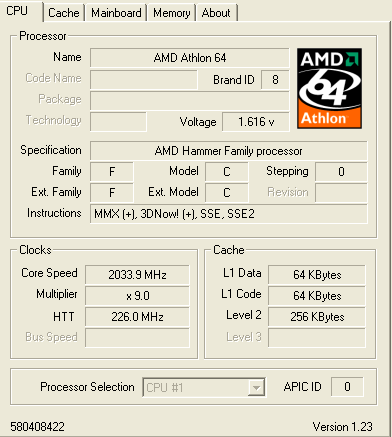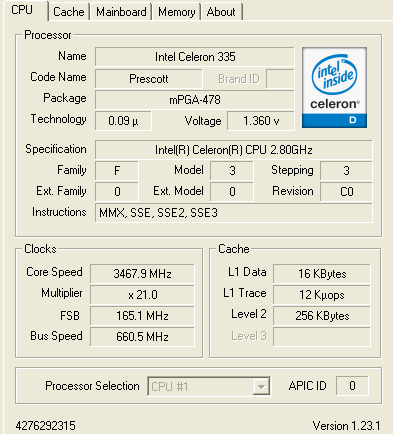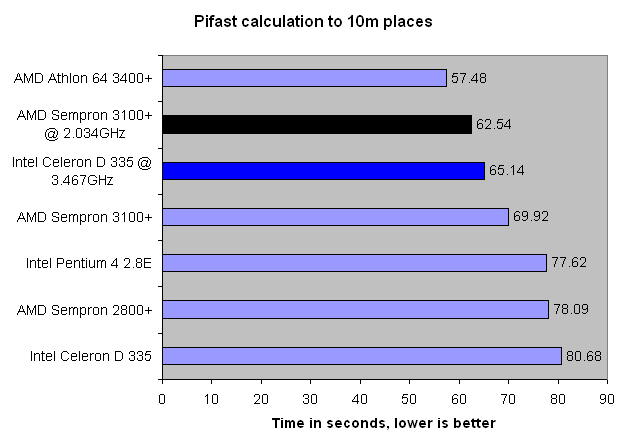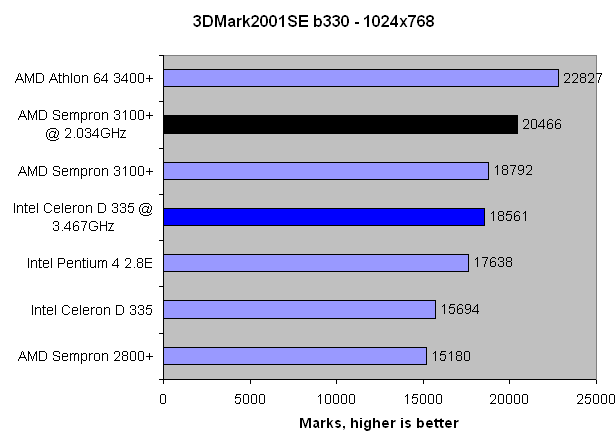Overclocking
OverclockingUnfortunately, I was unable to overclock the Socket A Sempron 2800+ processor. The supplied motherboard, an ASUS Micro-ATX, was bereft of voltage and FSB adjustment. The other two budget processors, however, could be overclocked by simply raising the FSB. Overclocking using the S754 Sempron 3100+ and compliant K8T800 motherboard was hampered by the inability to lock AGP and PCI buses to default levels. Still, I managed to overclock to a rock-solid 226MHz driven clock without issue and cooled by a reference S754 heatsink and fan combination. Just a touch over default voltage was used. I'm adamant that the Sempron 3100+ would go significantly higher with a) better cooling and b) with multiplier adjustment and lockable buses.

Intel's Celeron D 335 proved to be an effective overclocker. Pentium 4 Prescott CPUs have shown a tendency to scale high, courtesy of a 31-stage pipeline and 90nm manufacturing process.

Almost 3.5GHz using default voltage and a reference Intel S478 heatsink. That's almost 25% above basic spec. I reckon Intel will have no trouble in ramping up Celeron D clocks in the near future if this retail sample is indicative of general Celeron D performance.
Pifast and 3DMark2001SE were re-run to show the effects of basic overclocking on results.

Almost 3.5GHz of Celeron D power makes for a potent performer in Pifast, although a 2GHz Sempron 3100+ still manages to outpace it.

Put simply, one needs a Celeron D running at almost double the Sempron 3100's 1.8GHz clock speed to match it in the quintessential gaming benchmark.









